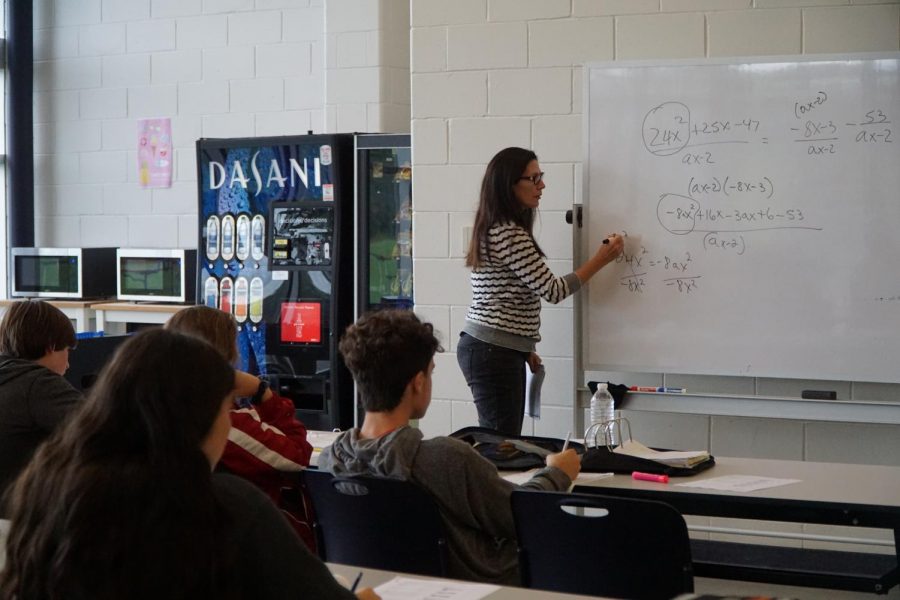Mold, mold, grow away: CHS responds to humid climate
Math teacher Paula Gilligan teaches in the cafeteria, which became a makeshift classroom during the relocation.
January 20, 2019
Typically, students gather in the CHS cafeteria to socialize. But at the end of September, students gathered to learn algebra. Following the discovery of mold growth in four classrooms, principal James Gleason relocated affected classes to other rooms, including the cafeteria on Sept. 24 and 25.
The district spent the weekend of Sept. 21 cleaning Rooms 141, 142, 143 and 144 in accordance with Environmental Protection Agency guidelines, Gleason said.
Senior Erica Sammarco of Colts Neck was the first student to discover mold growth during AP Calculus in Room 142.
“The whole underside [of the desk] was covered in green, blue and black lumps,” Sammarco said. “We had class in that room for at least three more days after that until we got the email saying the back hallway was closed.”
Administration hired an outside company to sample air from the impacted classrooms. When results returned on Sept. 26, students continued their usual schedules.
But, the problem persisted. Sammarco noticed a substance on a computer mouse in Room 143, prompting Gleason to send a schoolwide email the next day.
Gleason alerted students and parents of additional mold growth in both Room 143 and the guidance conference room.
The air quality test found that the indoor spore counts were very low in relation to the outdoor counts. This identifies the source of the spores as outside air, rather than an indoor problem, according to the SUNY College of Environmental Science and Forestry (ESF).
Rooms 141, 142 and 144 had minimal spore counts that rivaled the control samples. Only Room 143 had an indoor spore count of significance, with a total of 1,500 Aspergillus/Penicillium counts per cubic meter.
Aspergillus and Penicillium are some of the most common spores, according to the CDC.
These species are not toxic but can cause mild symptoms like sneezing or watery eyes, according to Mayo Clinic. They only grow in humid air and usually indicate water damage, according to the ESF.
Some students with asthma or severe allergies experienced heightened symptoms. Senior Emily McNeill of Colts Neck has a mold allergy and said she experienced symptoms as early as the second week of school.
“My asthma got worse and I felt really congested, but I wasn’t sure what the cause was,” McNeill said. “Then I started feeling really fatigued, and I would randomly get really lightheaded and dizzy.”
As a precaution, McNeill’s third period Advanced Web Design class relocated to Room 101 for the remainder of the semester.
Gleason said that the district took appropriate measures to address the classroom situations for students like McNeill.
“I feel terrible about the fact that obviously we have an environment that’s not good [for them,]” Gleason said.
“[We] are doing due diligence to make sure that those rooms are clean and ready for learning.”







